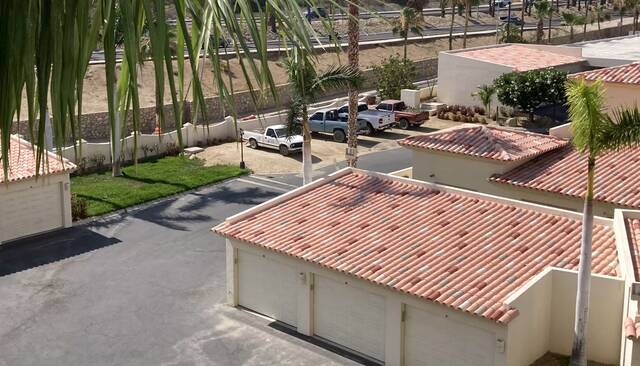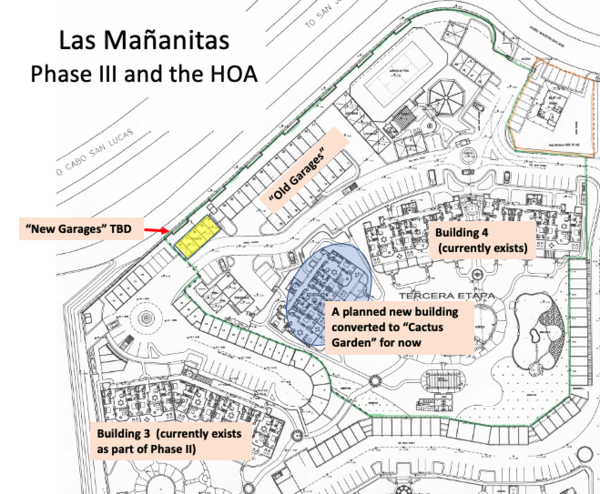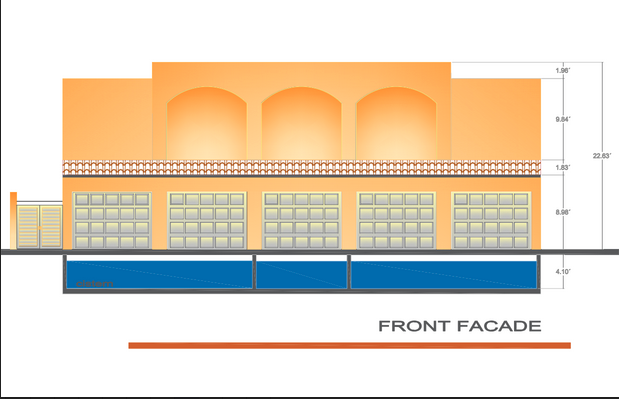The Twists & Turns In Seeking An Approval for a ‘No Brainer’
Something that should be easy turns out to be "unnecessarily arduous."
Last December and January the new Board was learning its duties and working hard on urgent tasks, like renewing the property insurance. The $135k insurance premium is our single largest expense, so the Board scrambled to get well-defined coverage, an A++ carrier, competitive quotes and financial results that held down the rate increases (which were initially forecasted in the $140k+ range.)
Simultaneously, as a newly arrived President, I used my “Management By Objectives” methodology to organize our work, starting with Mission (“to secure a safe, sound, beautiful, comfortable community”), defining our key Values ("integrity, transparency and consideration”) and ultimately forming a Plan that embraced and extended what was already working well.
The New Garages Project
Many of the “projects” listed in that 2022 Plan were well defined. David and the LM staff tackled them right away. One high-priority project had many moving parts and needed a bit of leadership; so, I grabbed it personally. The deliverable: To build 5 new garages on that dirt lot against the western boundary of the property, right between Phase II and Phase III.


I learned that we had more than 10 people on the Waiting List -- Owners desperate for the garages. This would be a no-brainer, I thought:
- The HOA already owns the land (which they bought with dues from EVERYONE in the 2017-2020 timeframe).
- The land is already legally approved for 5 garages.
- Community Manager David Alanis had a bid from the construction company that originally built Las Mañanitas and the other garages. They even had some of those cute Mexican roofing tiles available, and the price was reasonable.
- My spreadsheet showed a winner. The fair market value of the garages was upwards of $50k USD each, and our construction costs were substantially less. There'd be a profit that could fatten the "contingency reserves" for a rainy day.
- The board liked it and asked me to nail down a specific plan they could approve. David was ready to build.
Since When Is Profit A Problem?
Everything looked great. Until I talked to the lawyer. He was concerned that the "profit" might disqualify the HOA from our status as an "Asociación Civil" -- a [non-profit] civil association -- and subject us to the 16% IVA tax. That would have made this Board (and me, specifically) really unpopular. "Hey, folks -- we made a few bucks on the garages, but you now have to pay 16% tax on top of your HOA fees!" Obviously, we didn't want to do that.,
So, I asked the lawyer to research the question and give me a solution. My business career has taught me that you can structure deals among willing parties to minimize and avoid certain taxes. Sadly, he "wasn't a tax lawyer" and couldn't help. He recommended a well-regarded CPA here in San Jose del Cabo, Roberto Osuna. It turned out that Roberto was tied up on a major project and, after several weeks of postponing our work, he simply was too over-committed to take up our matter and declined our offer to engage him.
With some effort, we found a tax specialty firm in Guadalajara with an excellent reputation and negotiated a fair fee arrangement. They did the research and gave a very solid opinion letter about how to structure the transaction to create a "surplus" ... which is perfectly fine for an Asociación Civil. We then looped in Associa Mexico, our corporate CPA, who listened to the recommendation made by the tax specialists and agreed to handle the accounting and governmental reports as recommended by the specialists.
Good news: we could proceed. Bad news: that took 9 weeks.
Solar Desalination Inadvertently Complicates Matters -- But in a Good Way
At last year's Assembly, the HOA members set up a "Solar Committee" to investigate how/if/when Las Mañanitas might invest in solar power. We spend over $300k USD per year on utilities, and all those costs are only going up.
The Solar Committee did some research and asked David and me to do some "back of the envelope" financial screening of various projects. See "Should Las Mañanitas be Solar-Powered?"

Long story short, we got information from a well-regarded local desalination provider, TSG Water. Their initial proposal shows substantial savings -- and that was before OOMSAPAS' announced a 36% rate hike for next year!
The TSG equipment needs an enclosed building about 20 x 25 feet and a big cistern to store the water generated until we use it. That would take land, utility installations, permits, and construction of a building -- all very costly.
David then had a great idea: Let's add a second-floor storage area on top of the new garages and a cistern underneath them. This would add slightly to the construction costs but not need any added land, permitting or utility hookups. He even had an architect design the building to add some arches to honor the arches on Phases II and III and make it really attractive. Like this:

The cost to build this wasn't substantially more expensive than the garages alone, and the extra storage space could house the desal equipment AND free up a garage that the HOA was using for storage. Win-win!
Not So Fast! Here Are Some Hoops To Jump Through First
OK, back to the lawyer: What Owners' approvals are needed? I won't regale you with the arguments and confusion that ensued. But, bottom line, we need 75% approval from the Owners of Phase III because their condominium regime would technically get some additional common area square footage -- namely, the second-floor storage area and the cistern!
Wait a minute: If the second-floor storage area and the cistern are part of the Phase III common area, why is the HOA (with its 106 Owners) paying for the construction? And what happens if Phase III wants to keep everything for itself? Can they do that?
Well, read about the current status of the Cross-Sharing Agreement. Somehow we have been sharing common areas for over 10 years and all three Phases approved entering into a Cross-Sharing Agreement in 2015. But the document never got formalized and signed! (We'll fix that in November. )
So, how can I ask Phase III Owners to approve adding common area (namely, the second-floor storage area and the cistern) to their Regime but have it be subject to a Cross-Sharing Agreement that hasn't been formalized? I'm working on that with the lawyer as we speak.
There -- you now see some of the frustrations. The good news is that one of the objectives we set in the 2022 Plan is to collect or create, then verify and index all key legal documents. We will get there. It will just be “unnecessarily arduous1”
1. This is a phrase repeated by “Qroo Paul,” an American Expat with a large YouTube following. He gives legally helpful tips on immigration, ownership, working, traveling and other aspects of Americans spending significant time in Mexico. Check out his YouTube channel.
